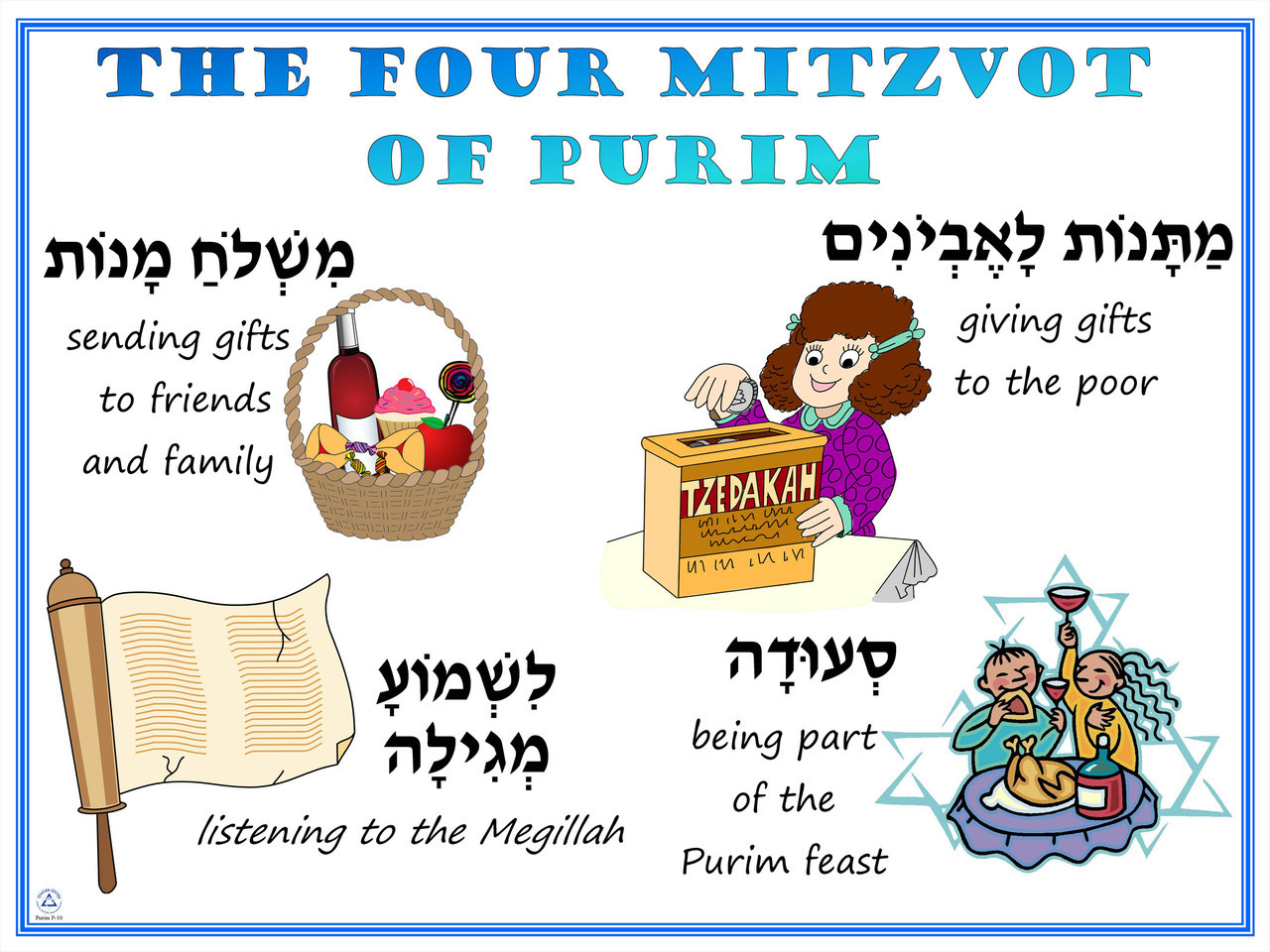Purim in the World of Affection
 There are four mitzvos one must fulfill on Purim: reading the megillah, matanos le’evyonim (gifts to poor people), mishloach manos (“shalachmones”), and the Purim se’udah. The first, reading the megillah, relates directly to the story of the day – nothing can be more connected than a mitzvah to retell it! But what do the other three mitzvos have to do with Purim?
There are four mitzvos one must fulfill on Purim: reading the megillah, matanos le’evyonim (gifts to poor people), mishloach manos (“shalachmones”), and the Purim se’udah. The first, reading the megillah, relates directly to the story of the day – nothing can be more connected than a mitzvah to retell it! But what do the other three mitzvos have to do with Purim?
Haman introduces his plan by describing the Jews as “עַם־אֶחָ֗ד מְפֻזָּ֤ר וּמְפֹרָד֙ בֵּ֣ין הָֽעַמִּ֔ים – a nation that is scattered and dispersed among the nations.” (3:8) Our most obvious feature was a lack of unity. And Hashem then – as we too often need him to do today – uses Haman to throw us a “matzav” (a “situation”) around which to unify.
And so, the theme of bringing Jews together is central to observing Purim. This drives the other three mitzvos: gifts to those in needs, sharing food with friends, and sitting down to a meal and drink with those we are close to.
But it doesn’t end there. The high point of the Purim story is when “קִיְּמ֣וּ (וקבל) [וְקִבְּל֣וּ] הַיְּהוּדִים֩ – the Jews fulfilled and accepted” (9:27) the mitzvos on a deeper level than we did at Sinai. Note the difference between the spelling and the read – the acceptance is spelled in the singular “וקבל” even though it is read in the plural (“וְקִבְּל֣וּ”); the nation’s acceptance was in unity.
The word qiymu, to fulfill the mitzvos, is more literally “to give permanence” (as in “qayam”). This unity is itself the very point of the mitzvos as a whole. Rav Wolbe opens his essay “Olam haYdidus – the World of Affection”, with a quote from the gemara. “יבוא ידיד בן ידיד ויבנה ידיד לידיד בחלקו של ידיד ויתכפרו בו ידידים – let the dear [Shelomo] the son of the dear [Avraham] and build a dear [Temple] for the dear [Creator] in the portion of the dear [Benjamin] and atone there dear [Israel]!” (Menachos 53a, which lists proof-texts where each is called “yedid”). Rav Wolbe derives “דת ישראל – עולם של ידידות – the Jewish Religion is a world of Yedidus!”
To fulfill the Torah anew, as we did on Purim, is to create relationships. To define ourselves as part of the greater whole; in concentric rings of yedidus. As Rav Shimon Shkop put it in his introduction:
The entire “I” of a coarse and lowly person is restricted only to his substance and body. Above him is someone who feels that his “I” is a synthesis of body and soul. And above him is someone who can include in his “I” all of his household and family. Someone who walks according to the way of the Torah, his “I” includes the whole Jewish people, since in truth every Jewish person is only like a limb of the body of the nation of Israel. And there are more levels in this of a person who is whole, who can connect his soul to feel that all of the world and worlds are his “I”, and he himself is only one small limb in all of creation. Then, his self-love helps him love all of the Jewish people and [even] all of creation.
And so this is reflected in the mitzvos of the day – we connect to our own souls through the reading of the megillah, to those closest to us at the meal, we send food to hose slightly further, and we share with the poor even if we have never met them before. These mitzvos, by reminding us that “ וְאָֽהַבְתָּ֥ לְרֵֽעֲךָ֖ כָּמ֑וֹךָ זהו כלל גדול בתורה – ‘love your peer as yourself’, this is a central principle of the Torah.” (R’ Aqiva, Y-mi Nedarim 30b) are our continuation of “קִיְּמ֣וּ (וקבל) [וְקִבְּל֣וּ] הַיְּהוּדִים֩ – the Jews fulfilled and accepted!”



Recent Comments